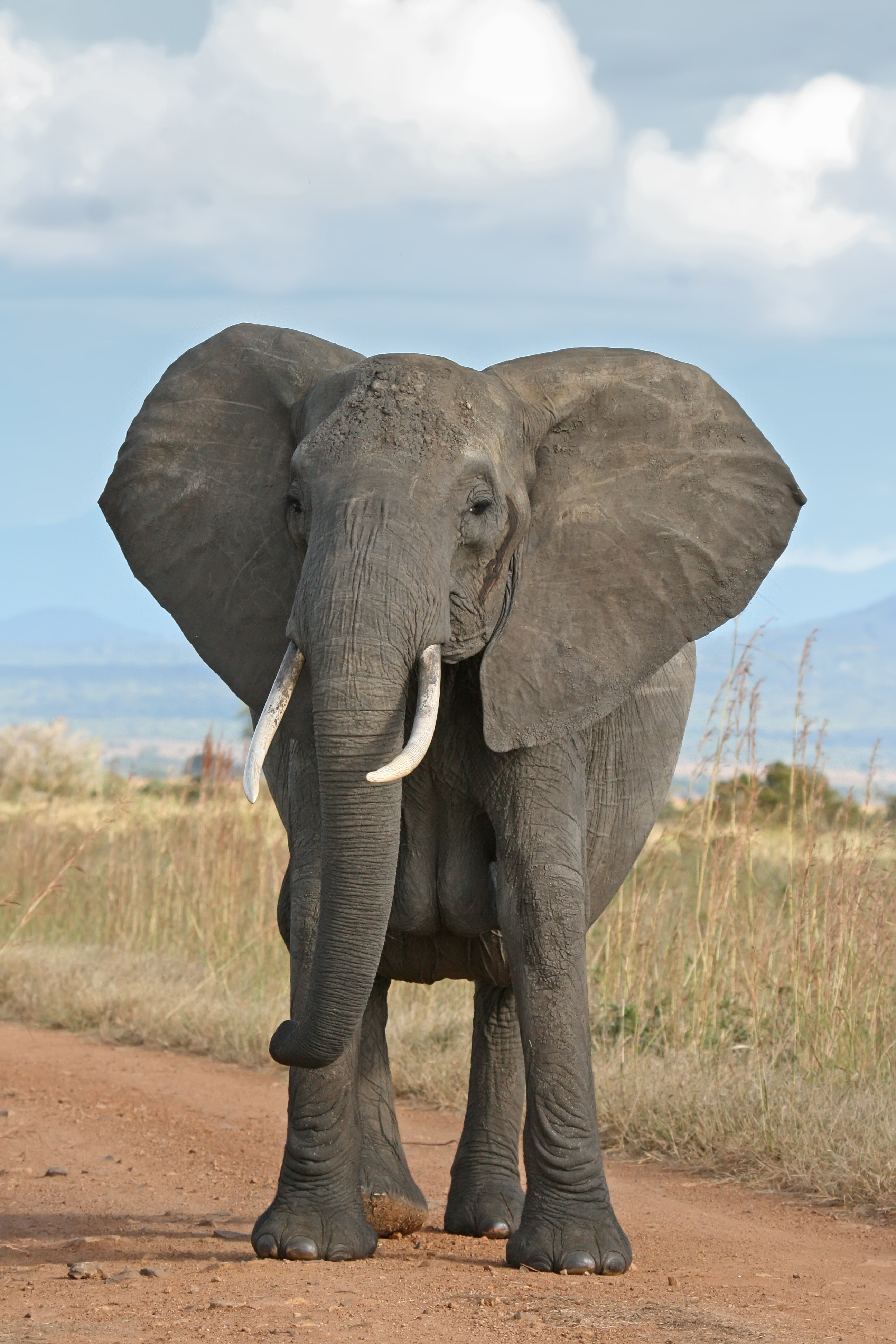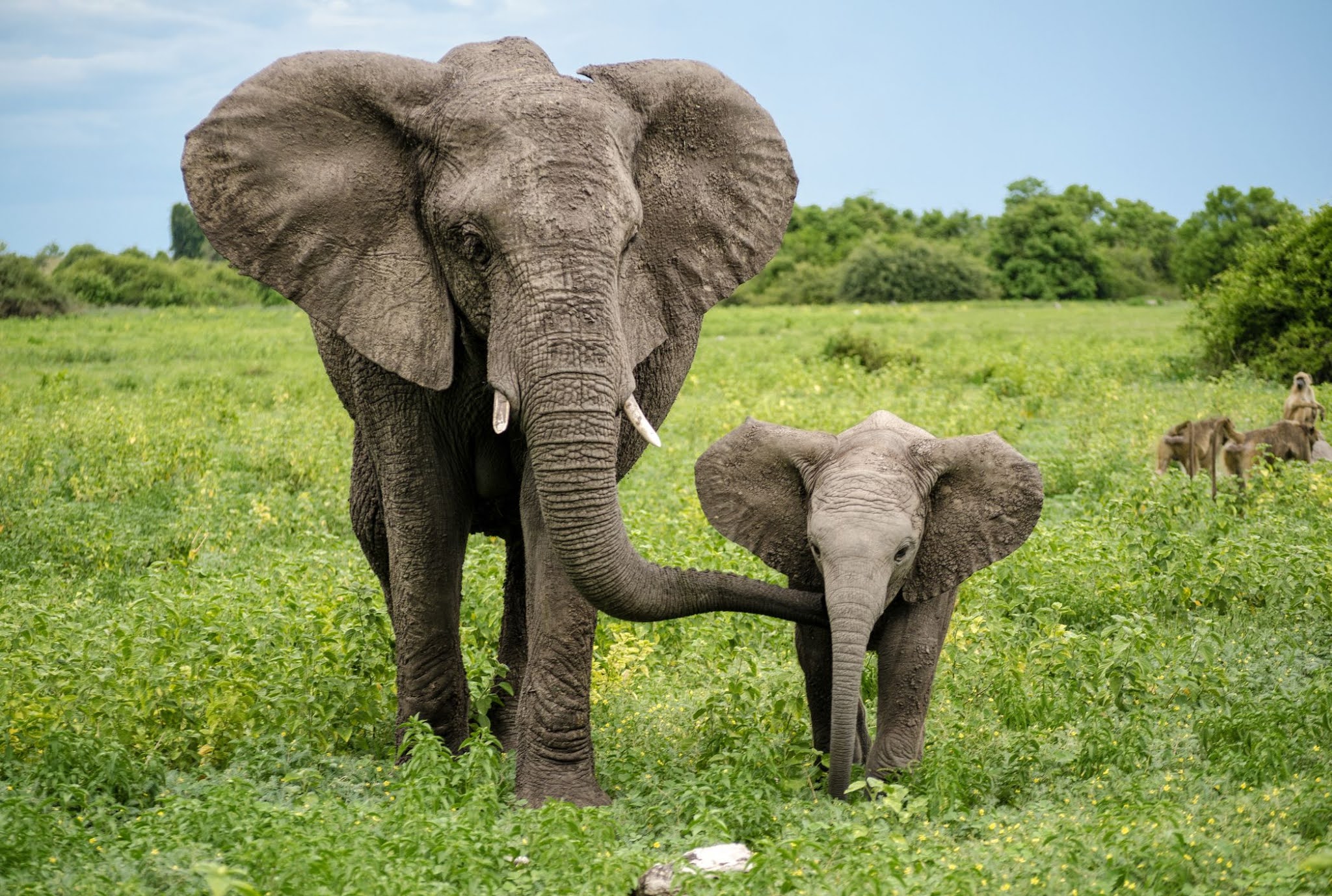Imagine a quiet morning, the sun just starting to warm the air at the San Diego Zoo Safari Park. Then, without much warning, the ground begins to tremble. It’s a moment that would startle anyone, but what happened next with a herd of African elephants was truly something special, a vivid display of their deep family connections and powerful instincts. This particular event, involving elephants and a San Diego earthquake, really captured the attention of so many people, too it's almost as if the whole world watched on.
On a Monday morning, April 14, a magnitude 5.2 earthquake rattled the region, with its center near Julian, California. While the quake itself was a notable event for folks living in Southern California, what unfolded about forty miles away at the Safari Park became the main topic of conversation. This wasn't just any ordinary day, you know, it was a moment where these majestic creatures showed us something incredible about themselves.
The footage, later shared widely and even obtained by CNN, revealed a unique moment. As the earth began to move, the elephants at the San Diego Zoo Safari Park didn't panic or scatter. Instead, they quickly came together, forming a protective shape. It was a remarkable sight, truly, and it showed just how connected they are as a group.
Table of Contents
- An Instinctive Response: The Alert Circle
- A Look at the Event: What Happened That Day
- Why Elephants Sense Earthquakes: A Unique Ability
- The Power of the Herd: Family Ties in Action
- Viral Footage: A Story That Traveled Far
- Learning From These Gentle Giants
- Frequently Asked Questions About Elephants and Earthquakes
An Instinctive Response: The Alert Circle
When the ground started to shake that Monday morning, the African elephants at the San Diego Zoo Safari Park immediately sprang into action. This wasn't a planned drill, obviously, but a deep-seated, natural reaction. They moved with a clear purpose, surrounding the younger elephants in their group. This specific behavior is known as an "alert circle," and it's a powerful demonstration of their collective care and protection, is that not something truly amazing?
The herd, consisting of five African elephants, quickly huddled together. They faced outward, creating a living barrier around their most vulnerable members – the two young calves. It was a moment of quiet strength, really, as they stood still, appearing to listen intently to the vibrations coming from the ground. This protective formation is a clear sign of their social structure and how they prioritize the safety of every single individual in their family group.
This protective "alert circle" is a behavior that speaks volumes about elephant trust and their strong bonds. It’s not something you see every day, and it highlights just how much these creatures rely on one another, especially when things get a bit unsettling. They didn't need a signal, just the very subtle shift in the earth, and then they acted as one, you know.
- Hydrating Shampoo And Conditioner
- Peggy Williams
- Deshedding Brush For Dogs
- Lyra Crow Onlyfans
- Chloe Difatta
A Look at the Event: What Happened That Day
The magnitude 5.2 earthquake struck near Julian, California, a place about forty miles from the San Diego Zoo Safari Park in Escondido. It was a jolt that could be felt across the region, and for the elephants, it was a clear signal that something was amiss. The ground shaking was brief, but the elephants' response was swift and decisive, which is pretty fascinating when you think about it.
Video footage, shared by the San Diego Zoo Safari Park and later seen by many through outlets like CNN, showed the precise moments of their reaction. The elephants didn't hesitate. They raced to protect their calves, forming that incredible alert circle. It was a truly unique moment, captured for everyone to witness, and it really highlighted their instinctive wisdom, you know.
The entire event, from the first tremor to the elephants settling into their protective formation, happened quite fast. It was a testament to their natural instincts and their deep-seated social structure. They showed an amazing level of awareness and responsiveness to their surroundings, even to something as subtle as ground vibrations, which is actually quite remarkable.
Why Elephants Sense Earthquakes: A Unique Ability
Elephants are known for their incredible ability to sense and communicate using vibrations through the ground. Their large feet and sensitive trunks are particularly good at picking up low-frequency sounds and seismic waves that humans can't even feel. This unique sensitivity is likely why they were able to react so quickly to the earthquake, even from forty miles away. It's almost like they have a natural early warning system built right into them, which is pretty cool.
They can detect these subtle tremors through their bones, particularly in their feet, and then transmit these sensations up to their inner ear. This allows them to "hear" distant rumbles or feel ground movements long before humans do. So, when that 5.2 magnitude quake hit, the elephants at the Safari Park basically felt it coming, or at least felt it more intensely than any person could have, that is for sure.
This ability helps them in many ways in the wild, from finding water sources to sensing predators or even communicating with other elephant groups miles away. In this instance, it allowed them to respond to a natural disaster with incredible speed and coordination. It shows a deep connection to their environment, in a way, and a sensitivity that is truly beyond our own.
The Power of the Herd: Family Ties in Action
The incident at the San Diego Zoo Safari Park really highlighted the powerful social ties within an elephant herd. These animals live in highly organized family groups, often led by an older, experienced female, known as a matriarch. Their lives are centered around cooperation, protection, and the well-being of every member, especially the youngest and most vulnerable, and that is just beautiful to see.
When the ground started shaking, the older elephants didn't just think of their own safety. They instinctively moved to shield the calves, forming that outward-facing circle. This behavior shows the immense trust and loyalty they have for one another. It's a clear example of how a group can come together in a moment of stress to ensure everyone's safety, which is something we can all learn from, actually.
The video captured this profound sense of unity. It wasn't just a random gathering; it was a coordinated, protective maneuver. This kind of action truly shows the depth of their social bonds and their natural instinct to care for their family. It makes you think about how strong those connections must be, you know, to react so perfectly under pressure.
Viral Footage: A Story That Traveled Far
The video of the elephants' reaction quickly went viral, capturing hearts and minds around the globe. It was an incredible piece of footage, showing animal instinct and social behavior in a way many had never witnessed before. People were talking about it everywhere, from local news channels to international reports, which is pretty cool.
The San Diego Zoo Safari Park shared the video, allowing a glimpse into this amazing moment. CNN even obtained access, bringing the story to an even wider audience. The images of the elephants huddling together, facing outward, became a powerful symbol of protection and family. It was a truly captivating sight, and it really resonated with people, you know, in a deep way.
The widespread sharing of the video meant that millions of people got to see this extraordinary display of animal intelligence and empathy. It sparked conversations about how animals sense natural events and the incredible bonds they form within their groups. It’s a story that continues to be remembered, showcasing the unique dynamics of elephant herds, and stuff.
Learning From These Gentle Giants
The elephants' reaction to the San Diego earthquake offers us a unique chance to learn more about their incredible senses and their complex social structures. It reminds us that animals have ways of interacting with their world that we are only just beginning to truly grasp. Their ability to detect subtle ground movements and their immediate, coordinated response is truly remarkable, and that is just a fact.
This event also highlights the importance of protecting these magnificent creatures and their habitats. Understanding their natural behaviors, like the "alert circle," helps us appreciate their intelligence and their intricate social lives even more. It’s a powerful reminder of the rich diversity of life on our planet and the wonders that exist within the animal kingdom, you know.
The story of the San Diego elephants and their protective circle will likely be told for a long time. It serves as a heartwarming example of animal instinct, family loyalty, and the surprising ways nature can reveal its secrets. It makes you want to learn more about these amazing animals and their world, doesn't it? Learn more about elephant conservation efforts on our site, and you might also like to link to this page about animal behavior during natural events.
Frequently Asked Questions About Elephants and Earthquakes
How do elephants sense earthquakes?
Elephants can feel ground vibrations through their large feet and sensitive trunks. They have specialized structures in their feet that pick up low-frequency sounds and seismic waves, sending those sensations to their inner ear. This allows them to detect tremors from far away, sometimes even before humans notice anything. It's a pretty amazing natural ability, actually.
What is an "alert circle" in elephant behavior?
An "alert circle" is a protective formation that elephant herds create, especially when they feel threatened or sense danger. The adult elephants will quickly huddle together, facing outward, forming a barrier around the younger or more vulnerable members of the group. It's a clear display of their strong family bonds and their instinctive need to keep everyone safe, you know.
Did the San Diego Zoo Safari Park elephants get hurt during the earthquake?
Based on the information available, the elephants at the San Diego Zoo Safari Park were not reported to have been harmed during the 5.2 magnitude earthquake. Their quick action in forming the protective "alert circle" helped ensure the safety of the younger calves and the entire herd. It was a brief event, and their immediate response was key to their well-being, which is very good news.



Author Details:
- Name : Prof. Elvis Cartwright
- Username : guido63
- Email : jordi.dickinson@hotmail.com
- Birthdate : 1979-12-28
- Address : 360 Sibyl Pass Port Timothymouth, OK 85580-8661
- Phone : 1-754-221-8321
- Company : Cremin LLC
- Job : Surveying Technician
- Bio : Impedit corporis dolorum quam ut sapiente eos. Vitae animi autem dignissimos optio assumenda voluptate. Exercitationem voluptatem dolores placeat. At aperiam omnis odio.
Social Networks
Linkedin:
- Url : https://linkedin.com/in/lewis609
- Username : lewis609
- Bio : Hic autem laboriosam ab.
- Followers : 2815
- Following : 1114
Twitter:
- Url : https://twitter.com/lewis.eichmann
- Username : lewis.eichmann
- Bio : Labore sunt sunt quia minus. Sequi rerum cupiditate ut excepturi et. Et ut nihil incidunt deleniti voluptatem qui expedita.
- Followers : 2690
- Following : 1513
Tiktok:
- Url : https://tiktok.com/@eichmannl
- Username : eichmannl
- Bio : Cupiditate magni qui eum. Aut omnis saepe rerum.
- Followers : 100
- Following : 466
Instagram:
- Url : https://instagram.com/eichmannl
- Username : eichmannl
- Bio : Quia similique culpa quia velit vero. Quisquam sunt voluptatum assumenda architecto.
- Followers : 3493
- Following : 1171
Facebook:
- Url : https://facebook.com/leichmann
- Username : leichmann
- Bio : Delectus dolores blanditiis ex labore.
- Followers : 1045
- Following : 1125
